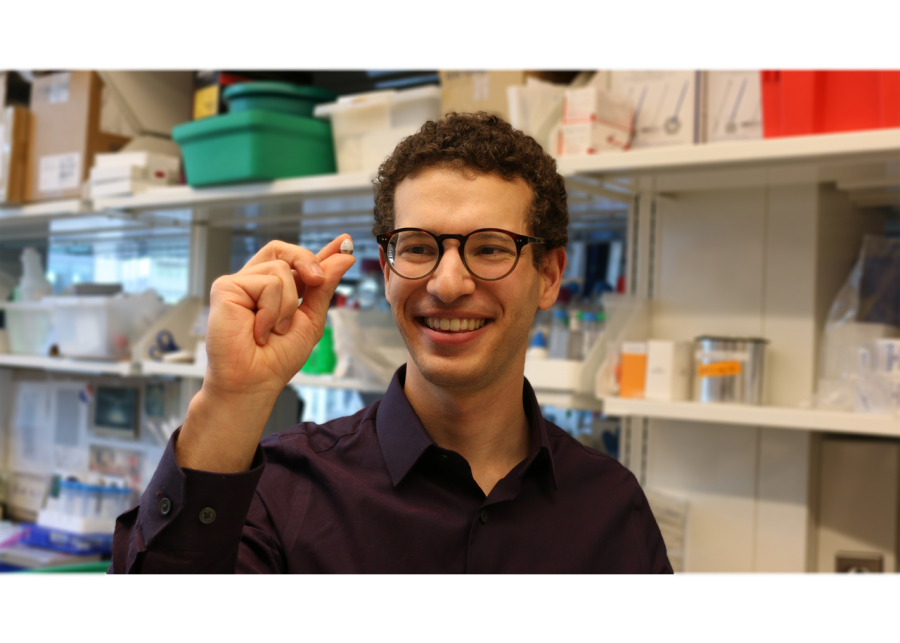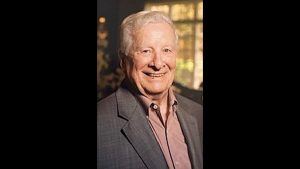St. Louis native part of team that develops pill form of insulin injection
Published February 14, 2019
See if you can swallow this one: Alex Abramson, a John Burroughs School graduate, is part of a team at the Massachusetts Institute of Technology that has invented a device that could allow people with diabetes to receive insulin orally rather than through an injection.
And he’s only 26 years old.
The New York Times, Wired and National Public Radio, among other news organizations, have done stories about the device, which uses a dissolvable microneedle, made of insulin, inside a pill to inject the drug directly into stomach tissue. They so far have only tested the invention in animals but hope to begin human testing within the next three years.
ADVERTISEMENT
The Jewish Light spoke with Abramson, who grew up at Congregation B’nai Amoona, about how he and his team developed the device, what it could mean for people with diabetes and how he became a candidate for a Ph.D in Chemical Engineering at MIT. His responses have been edited for space and clarity.
How did you first become interested in science?
I became interested in science at a very young age. I have always been interested in making new things in a way that can really help people. I found out that I wanted to do my Ph.D my freshman year of college when I did research in the lab of Dr. David Gracias [at Johns Hopkins University]. I worked on these things called microgrippers in which you ingest these small microfabricated pieces, and they close up along the intestinal wall and they collect biopsies. I was really excited about that, and I knew I wanted to make my own devices.
What in particular did you find interesting about microgrippers?
I thought it was really cool that once you ingested something, it could do this autonomous work inside the body, so there was no need for any human interaction.
How did you end up working on the project with insulin?
When I came to MIT, I talked to a bunch of different people to figure out what project I want to do in my first semester. I talked to Bob Langer and Giovanni Traverso, who are my two advisors, and they pitched me this project saying they are creating a pill to help deliver insulin. They didn’t give me an exact concrete way of how to do it, just that we wanted to do it by injecting a small amount of drug directly into the tissue wall, and I thought that that was amazing and a really novel approach on how to create this new system.
How does the device work?
ADVERTISEMENT
We wanted to make sure that we were inserting a drug post directly into the tissue wall of the gastrointestinal tract. We choose the stomach for the location of the drug post because the the stomach’s wall is between 4 and 8 millimeters thick, whereas the small intestine is anywhere from 0.1 to 2 millimeters thick. T
here is a lot more robustness in the stomach that can allow for the insertion of such an object, but the stomach itself is a very large organ. So if you take a pill, you have no idea in which orientation it’s going to land in the stomach.
If it were to land facing towards the tissue that would be great, but if it landed in the wrong direction, then it wouldn’t deliver the drug.
So we developed a self-orienting system that made sure that when you swallow the pill, regardless of which orientation it lands, it reverts itself to the preferred orientation where the actuation mechanism is pointing directly down into the tissue.
Why is this device preferable to injecting insulin?
There are a couple different reasons. They have to do with three different metrics for taking a therapy. One of them is the time of initiation. Initiation of insulin and other injectable drugs is often delayed by an average of 7.7 years and that’s because it requires an injection.
People have this stigma around injection that they don’t want to do it because once they have to start taking insulin, they feel much sicker. The other reasons have to do with persistence and compliance, and so oral therapies compared to injectable therapies are shown to have higher persistence and compliance.
Persistence means if you go to a dentist and the dentist tells you to floss every single day, and you go home and floss every single day for three weeks but then after three weeks, you stop. It means you have been persistent for three weeks.
Compliance means if you go home and say, ‘I’m just going to floss twice a week,’ then you’re compliance would be two out of seven. For all of these reasons, oral therapies are preferred.
What was your experience growing up in the St. Louis Jewish community?
I went to Camp Ramot Amoona, and I was actually a counselor there in high school. I really enjoyed my time at B’nai Amoona. I also was in Hebrew school there and I did Sunday school.
What impact did your involvement in the Jewish community have on you?
I think that through my Jewish education, I really learned how to ask questions and critically think about problems, and I think that that really impacted my career in science. The other thing that had a huge impact is the idea of tikkun olam and giving back. I want to make sure that the projects that I work on are things that are going to make a positive difference in people’s lives.
This story is part of our “36 and Under” series, which highlights interesting Jews age 36 and under who either live in St. Louis or have spent a significant amount of time here. If you would like to recommend someone for this intermittent feature, email [email protected].

















